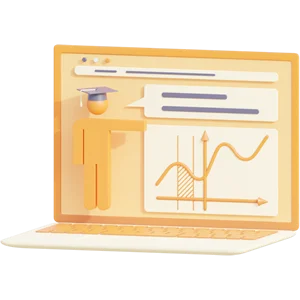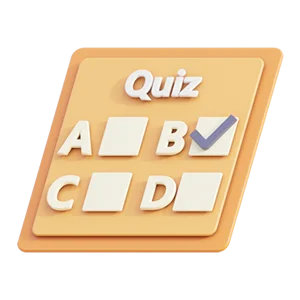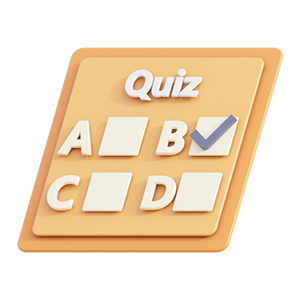UNDERSTANDING PATHOPHSIOLOGY 6TH EDITION TEST BANK BY SUE E.HUETHER;KATHRYN L MCCANCE
UNDERSTANDING PATHOPHSIOLOGY 6TH EDITION TEST BANK BY SUE E.HUETHER;KATHRYN L MCCANCE
TEST BANK FOR
Understanding Pathophysiology 6th Edition
By: Sue E. Huether; Kathryn L. McCance
PART ONE: BASIC CONCEPTS OF PATHOPHYSIOLOGY
Unit 1: The Cell
Chapter 1: Cellular Biology
Chapter 2. Genes and Genetic Diseases Chapter 3. Epigenetics and Disease (NEW)
Chapter 4. Altered Cellular and Tissue Biology Chapter 5. Fluids and Electrolytes, Acids and Bases Unit 2: Mechanisms of Self-Defense
Chapter 6. Innate Immunity: Inflammation and Wound Healing Chapter 7. Adaptive Immunity
Chapter 8. Infection and Defects in Mechanisms of Defense Chapter 9. Stress and Disease
Unit 3: Cellular Proliferation: Cancer Chapter 10. Biology of Cancer
Chapter 11. Cancer Epidemiology
Chapter 12. Cancer in Children and Adolescents
PART TWO: BODY SYSTEMS AND DISEASES
Unit 4: The Neurologic System
Chapter 13. Structure and Function of the Neurologic System Chapter 14. Pain, Temperature, Sleep, and Sensory Function
Chapter 15. Alterations in Cognitive Systems, Cerebral Hemodynamics and Motor Function
Chapter 16. Disorders of the Central and Peripheral Nervous Systems and Neuromuscular Junction Chapter 17. Alterations of Neurologic Function in Children
Unit 5: The Endocrine System
Chapter 18. Mechanisms of Hormonal Regulation Chapter 19. Alterations of Hormonal Regulation Unit 6: The Hematologic System
Chapter 20. Structure and Function of the Hematologic System Chapter 21. Alterations in Hematologic Function
Chapter 22. Alterations of Hematologic Function in Children Unit 7: The Cardiovascular and Lymphatic Systems
Chapter 23. Structure and Function of the Cardiovascular and Lymphatic Systems
Chapter 24. Alterations of Cardiovascular Function
Chapter 25. Alterations of Cardiovascular Function in Children Unit 8: The Pulmonary System
Chapter 26. Structure and Function of the Pulmonary System Chapter 27. Alterations of Pulmonary Function
Chapter 28. Alterations of Pulmonary Function in Children Unit 9: The Renal and Urologic Systems
Chapter 29. Structure and Function of the Renal and Urologic Systems Chapter 30. Alterations of Renal and Urinary Tract Function
Chapter 31. Alterations of Renal and Urinary Tract Function in Children Unit 10: The Reproductive Systems
Chapter 32. Structure and Function of the Reproductive Systems Chapter 33. Alterations of the Female Reproductive System Chapter 34. Alterations of the Male Reproductive System
Unit 11: The Digestive System
Chapter 35. Structure and Function of the Digestive System Chapter 36. Alterations of Digestive Function
Chapter 37. Alterations in Digestive Function in Children Unit 12: The Musculoskeletal and Integumentary Systems
Chapter 38. Structure and Function of the Musculoskeletal System Chapter 39. Alterations of Musculoskeletal Function
Chapter 40. Alterations of Musculoskeletal Function in Children Chapter 41. Structure, Function, and Disorders of the Integument Chapter 42. Alterations of the Integument in Children
Chapter 01: Cellular Biology Huether & McCance: Understanding Pathophysiology, 6th Edition
MULTIPLE CHOICE
1. A student is observing a cell under the microscope. It is observed to have supercoiled DNA with histones. Which of the following would also be observed by the student?
a. A single circular chromosome
b. A nucleus
c. Free-floating nuclear material
d. No organelles
ANS: B
The cell described is a eukaryotic cell, so it has histones and a supercoiled DNA within its nucleus; thus, the nucleus should be observed. A single circular chromosome called a prokaryote contains free-floating nuclear material but has no organelles.
REF: p. 2
2. A nurse is instructing the staff about cellular functions. Which cellular function is the nurse describing when an isolated cell absorbs oxygen and uses it to transform nutrients to energy? a.
Metabolic absorption
b. Communication
c. Secretion
d. Respiration
ANS: D
The cell’s ability to absorb oxygen is referred to as respiration while its communication ability involves maintenance of a steady dynamic state, metabolic absorption provides nutrition, and secretion allows for the synthesizing of new substances.
REF: p. 2
3. A eukaryotic cell is undergoing DNA replication. In which region of the cell would most of the genetic information be contained?
a. Mitochondria
b. Ribosome
c. Nucleolus
d. Nucleus Cytoplasm
ANS: C
The region of the cell that contains genetic material, including a large amount of ribonucleic acid, most of the DNA, and DNA-binding proteins, is the nucleolus, which is located within the cell’s nucleus. Mitochondria is associated with cellular respiration, while ribosomes are involved with protein manufacturing. Cytoplasm is a fluid filling that is a component of the cell.
REF: p. 2
4. Which of the following can remove proteins attached to the cell’s bilayer by dissolving the layer itself?
a. Peripheral membrane proteins
b. Integral membrane proteins
c. Glycoproteins
d. Cell adhesion molecules
ANS: B
Proteins directly attached to the membrane bilayer can be removed by the action of integral membrane proteins that dissolve the bilayer. Peripheral membrane proteins reside at the surface while cell adhesion molecules are on the outside of the membrane. Glycoprotein marks cells and does not float.
REF: p. 7
5. Which of the following can bind to plasma membrane receptors?
a. Oxygen
b. Ribosomes
c. Amphipathic lipids
d. Ligands
ANS: D
Ligands are the only specific molecules that can bind with receptors on the cell membrane.
REF: p. 9
6. A nurse is reviewing a report from a patient with metastatic cancer. What alternation in the ea.xtr Decreasedacellular mat fibronectinrix would support the diagnosis of metastatic cancer?
b. Increased collagen
c. Decreased elastin
d. Increased glycoproteins
ANS: A
Only a reduced amount of fibronectin is found in some types of cancerous cells, allowing them to travel or metastasize.
REF: p. 10
7. Which form of cell communication is used to relate to other cells in direct physical contact? a.
Cell junction
b. Gap junction
c. Desmosome
d. Tight junction
ANS: A
Cell junctions hold cells together and permit molecules to pass from cell to cell.
Gap junctions allow for cellular communication between cells. Neither desmosomes nor tight junctions are associated with cellular communication.
REF: p. 11
8. Pancreatic beta cells secrete insulin, which inhibits secretion of glucagon from neighboring alpha cells. This action is an example of which of the following signaling types? a. Paracrine
b. Autocrine
c. Neurohormonal
d. Hormonal
ANS: A
Paracrine signaling involves the release of local chemical mediators that are quickly taken up, destroyed, or immobilized, as in the case of insulin and the inhibition of the secretion of glucagon. None of the other options involve signaling that is associated with a local chemical mediator like insulin.
REF: p. 12
9. In cellular metabolism, each enzyme has a high affinity for a: a. solute.
b. substrate.
c. receptor.
d. ribosome.
ANS: B
Each enzyme has a high affinity for a substrate, a specific substance converted to a product of the reaction. Cellular metabolism is not dependent on an attraction between an enzyme and any of the remaining options.
REF: p. 16
10. An athlete runs a marathon, after which his muscles feel fatigued and unable to contract. The athlete asks the nurse why this happened. The nurse’s response is based on the knowledge that the problem is result of a deficiency of:
a. GTP
b. AMP
c. ATP
d. GMP
ANS: C
When ATP is deficient, impaired muscle contraction results. None of the other options are involved in muscle contraction.
REF: p. 16
11. Which phase of catabolism produces the most ATP?
a. Digestion
b. Glycolysis
c. Oxidation
d. Citric acid cycle
ANS: D
While some ATP is produced during the oxidation and glycolysis phases, most of the ATP is generated during the citric acid cycle. Digestion does not produce any ATP.
REF: p. 16
12. A nurse is teaching the staff about the phases of cellular catabolism. Which phases should the nurse include?
a. Digestion, glycolysis, oxidation, and the citric acid cycle
b. Diffusion, osmosis, and mediated transport
c. S phase, G phase, and M phase
d. Metabolic absorption, respiration, and excretion
ANS: A
Only digestion, glycolysis, oxidation, and the citric acid cycle are the phases of cellular catabolism.
REF: p. 16
13. A runner has depleted all the oxygen available for muscle energy. Which of the following will facilitate his continued muscle performance? a. Electron-transport chain
b. Aerobic glycolysis
c. Anaerobic glycolysis
d. Oxidative phosphorylation
ANS: C
When no oxygen is available, anaerobic glycolysis occurs. The electron-transport chain is part of the citric acid cycle. Aerobic glycolysis involves the presence of oxygen. Oxidative phosphorylation is the mechanism by which the energy produced from carbohydrates, fats, and proteins is transferred to ATP. It is not part of muscle performance.
REF: p. 16
14. A faculty member asks a student to identify the appropriate term for the movement of a solute from an area of greater to lesser concentration. Which answer indicates the nursing student understood the teaching? a. Osmosis
Preview document (3 van de 716 pagina's)
Voordelen van Knoowy
€ 47,09
 Niet tevreden? Geld terug
Niet tevreden? Geld terug
 Document direct te downloaden
Document direct te downloaden
 € 0,50 korting bij betalen met saldo
€ 0,50 korting bij betalen met saldo
-
 Ontvang gratis oefenvragen bij document
Ontvang gratis oefenvragen bij document

Specificaties
- School: Chamberlain College Of Nursing
- Opleiding: NURSING
Document
- Rubriek: Tentamens
- Gemaakt op: 31-01-2024
- Type: .pdf
- Pagina's: 716
- Taal: English
Tags
Verkoper
Helps students with ALL BEST Revision; Guides,Exams,Summaries,Test Banks ...etc.WISHING YOU SUCCESS
Verdienen aan je samenvattingen?
Vakken van NURSING - Chamberlain College Of Nursing
Meer NURSING ›ati ati comprehensive predictor ati pharmacology proctored community health comprehensive fundamentals health care health care / nursing health care/ nursing healthcare hesi hesi rn exit leadership maternal newborn med surg medical surgical mental health nurs nursing nursing & health nutrition pediatrics pharmacology test bank tncc
Al meer dan 146.000 tevreden studenten
-
maredalmolen
Super handig als je weinig tijd hebt. Samenvattingen zijn makkelijk te vinden en keuze is groot.
-
FCW
Handig te gebruiken bij het leren en er is veel aanbod op de website.
-
pensieve
Deze site is een uitkomst als samenvatten niet je sterkste punt is. Zeker als je moet leren voor toetsen kun je hier alle nodige info vinden. Win-win.
-
Nadia Kasmi
Altijd tevreden over Knoowy! Reeds vele samenvattingen gedownload maar ook geüpload.
-
biekebij
Downloaden maar! Goede site met goede documenten. De prijs wordt aangepast o.b.v. de beoordelingen.
-
Nicole02
Goed voor als je een samenvatting nodig hebt of de leerstof niet zo goed snapt, maar ook voor als je bijles nodig hebt.
-
JadeVanBignoot
Knoowy is zeker aan te raden. Het is goedkoper dan andere platforms.
-
Naya
De website is gebruik vriendelijk, je krijgt meteen de samenvatting na de betaling. Aanbevolen!
 Actie: ontvang 10% korting bij aankoop van 3 of meer items!
Actie: ontvang 10% korting bij aankoop van 3 of meer items!
Actie: ontvang 10% korting bij aankoop van 3 of meer items!









